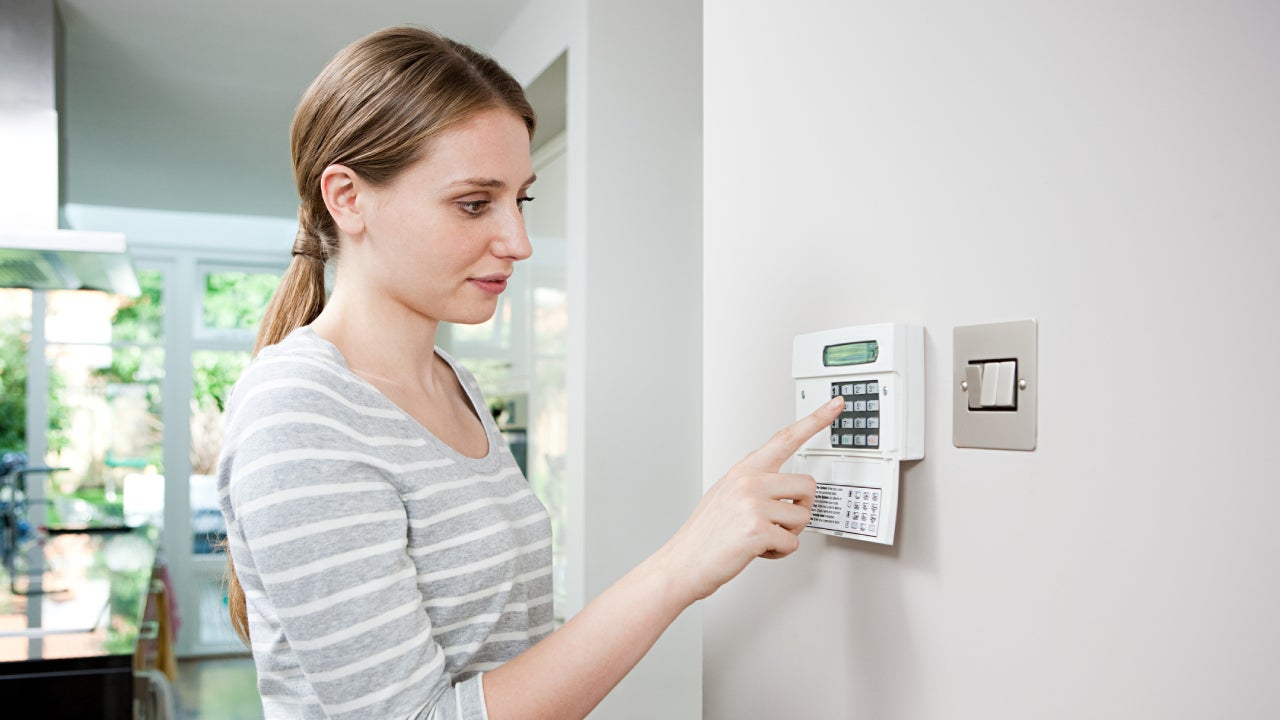Smart home security system guide

Gone are the days of protecting your home with old-school home security systems, forking over some serious coin to have a company do the work for you. Now, you can use smart home security devices to protect your home.
As their name implies, they possess intelligence and ease of access that older systems cannot match. Devices such as smart locks, video doorbells, and security cameras connect to the internet, allowing you to view camera feeds, alarm notifications, door locks, access logs, and more through the provider’s mobile app.
The demand for these devices continues to grow. Half of all homes now possess at least one smart home device, with security systems being the most popular segment. Our guide tackles some of the most innovative security devices available, some pros of using them, and things to consider before buying them.
How do smart home security systems work?
Smart home security systems connect to the internet through your home’s Wi-Fi connection. And you use your provider’s mobile app to access your security tools through your smartphone, tablet or computer. Doing so enables you to create specialized settings, such as setting temporary codes for door access.
Additionally, innovations have come a long way to offer you enhanced protection. Doorbell cameras now feature facial recognition software. Cameras have smart detection capabilities that can send an alert to your phone.
“Many modern security systems can now integrate with other smart devices in your homes, such as thermostats and door locks,” says Jeremy Clifford, CEO and founder of Router CTRL. For example, you can program lights to turn on as you arrive home and schedule other measures to keep you safer.
Types of smart home devices
Here are some of the smart home security gadgets you can buy to protect you and your loved ones.
Smart locks
Cost: $250-$400
Smart locks control your home’s main access point whether you’re there, across town or several states away. Some models come with Wi-fi connectivity, enabling you to use the manufacturer’s app to unlock and lock your door instead of fumbling with keys. They also feature an activity log, allowing you to see who comes and when they leave–a must, for example, if you have a pet sitter or are waiting for your child to come home from school. You can assign temporary codes for babysitters, guests and contractors.
Video doorbells
Cost: Price from $24.99 and up
Video doorbells alert you when someone is at your door. You’ll receive a notification to access the doorbell’s camera to see who it is and grant them access (if you have a smart lock). Some products come with audio and video, giving you the ability to talk to the person at your door. Most models come with video storage (you might need a paid subscription depending on the manufacturer and how much storage you need), and the newest ones feature facial recognition software. Most importantly, a video doorbell could reduce the risk of someone attempting to steal your packages or break-in, if they can see the camera.
Home security cameras
Cost: $60 and up
Home security cameras provide a fresh pair of eyes when you’re not around. They send you notifications when they detect movement. Some feature night vision capabilities, providing clear images of who or what is triggering the camera’s sensor. And the improvement on the picture resolution side means some cameras have the sight and strength to capture license plates of cars rolling by or facial recognition. In all instances, “These sensors can detect even the slightest movement, which can help deter intruders before they cause any damage,” states Clifford. Some cameras, like the Wyze Cam, even come with a mico-SD slot for local video storage and can alert you when your smoke detector activates.
Pool alarm
Cost: Starting from $100
“One of the security devices that I wish were more popular is a pool alarm,” says Leonard Ang, CEO of iPropertyManagement. “There is no other security gadget that has a better chance of saving the life of your child, pet, or neighbor. These alarms trigger whenever there is enough of a splash in your pool to move the sensor, which floats on the surface.” You can also install entry gate alarms. When the sensor senses movement, it triggers an alarm. These run a little less than surface pool ones, with the costs starting from around $33.
Home security/monitoring systems
Cost: Starting from $60 (monitoring systems have a monthly fee)
Home security systems feature a camera, motion sensor, and a base device (including a router in Wyze’s case). You can customize the equipment to your needs, adding more cameras for larger yards, a video doorbell, more motion sensors for windows (these can detect and report glass breaks), and even carbon monoxide detectors. Also, since everything comes from one manufacturer, they work in tandem, enabling you to access camera feeds, a video doorbell, smart locks, and more from one mobile app. Most importantly, you can add monitoring services, which contact first responders if any emergencies arise.
Advantages of smart home security devices
There are benefits you gain with these products, such as:
- Convenience: You can access door activity logs, lock doors, and view camera feeds from your smartphone, tablet, or computer. Installation is simple, especially for wireless cameras, and if you need assistance, your provider can offer installation services or how-to tools to assist.
- Cheaper: Your insurance provider might reward you for installing home security equipment. You earn up to a 15 percent discount on your homeowner’s policy, with preference given to having more than one security device and 24/7 monitoring.
- Deterrent: Homes not possessing smart home security features are three times more likely to have an attempted burglary.
Disadvantages of smart home security devices
There are some challenges to using these devices as well:
- Lack of compatibility: If you buy security devices from multiple companies, they might not be compatible. It means you might need several apps instead of one to control all of your gadgets.
- Price: Security equipment can be pricey, and the smart versions can be pricier than their conventional counterparts. Factor in the installation costs, with the average cost being $1,327, and monitoring fees, which can run from $20 to $50 per month, and it’s an expensive endeavor.
- Device hiccups: If you have a wired device and your home loses power, you could lose access to those security features unless you have a battery backup. And if you have a Wi-Fi-enabled device, the same applies if you experience an internet service outage.
Last word on smart home security systems
Smart home security devices feature many tools to keep your home safer. You can score a healthy discount with your insurance provider and keep thieves at bay by installing them. While they offer a litany of perks, be mindful of the costs associated with the equipment, installation and monitoring. Also, to avoid needing an avalanche of new apps, try to pair devices that are compatible. That way, you can control the system through a central hub or through a voice assistant.






